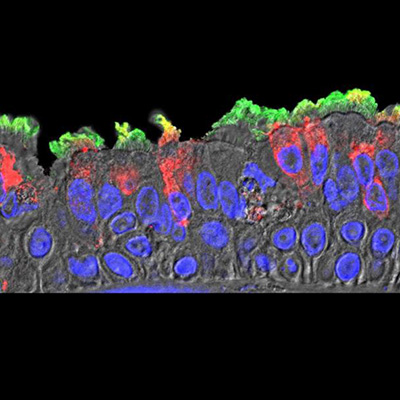August 28, 2020 -- A new mouse-adapted SARS-CoV-2 model developed with engineered virus can help accelerate vaccine and therapeutic candidates to clinical trials. The results of the preclinical studies were published in Nature on August 27.
Small animal models that recapitulate SARS-CoV-2 disease can help gain a better understanding of disease mechanisms and evaluate medical countermeasures. In addition to providing insights into pathogenic mechanisms of coronavirus disease, mouse models can act as high-throughput preclinical evaluation platforms to identify efficacious antiviral treatments and vaccines. Standard laboratory mice do not support infection with SARS-CoV-2 because the spike protein and murine ortholog of angiotensin-converting enzyme 2 (mACE2) of the human receptor is incompatible.
Now, University of North Carolina (UNC) at Chapel Hill researchers led by virologist Ralph Baric, PhD, have developed a new model to accelerate the development of Operation Warp Speed vaccines such as the Moderna messenger RNA (mRNA)-1273 vaccine candidate.
The researchers sought to remodel the SARS-CoV-2 spike receptor-binding domain to facilitate efficient binding to mACE2. To do this they started by comparing the ACE2 contact residues of the receptor-binding domains of several group 2B coronaviruses that are capable of infecting mice to those of SARS-CoV-2.
Using reverse genetics, they engineered Q498Y/P499T into the SARS-CoV-2 spike gene and recovered the recombinant virus (SARS-CoV-2 MA). The mouse-adapted virus was capable of infecting standard laboratory mice (BALB/c). SARS-CoV-2 MA RNA could be detected in Vero E6 cells expressing mACE2 24 hours after infection.
The engineered virus caused mild to moderate infection upon infection of young mice and the virus was detected in the upper and lower airways. When one-year-old BALB/c mice were infected with SARS-CoV-2 MA, there was evidence of more severe disease.
Testing the modified virus in preclinical tests of medical countermeasures
The researchers wanted to show the utility of the SARS-CoV-2 MA model for screening potential vaccines and therapies. Treatment with interferons has been used for the treatment of several viral infections, including SARS-CoV and MERS-CoV infections. Interferon λ is a type III interferon with a large number of receptors in the epithelial cells of the lungs.
The researchers tested pegylated human interferon λ-1 (peg-IFN-λ1) as a potential antiviral capable of inhibiting infection of primary human airway epithelial cell cultures by SARS-CoV-2. The data showed that the treatment was capable of reducing infection in vitro. The treatment has been given to over 3,000 COVID-19 patients as part of clinical trials at Stanford University. When given to one-year-old BALB/c mice infected with SARS-CoV-2 MA, the treatment diminished viral replication.
The researchers also investigated vaccination with virus replicon particle systems against the SARS-CoV-2 spike, nucleocapsid, and control, with a boost after three weeks and a challenge with SARS-CoV-2 MA at four weeks post boost. They found that only mice vaccinated with the spike protein potently neutralized SARS-CoV-2 and reduced viral loads.
"We have collaborated with the National Institutes of Health Vaccine Research Center and Moderna to test their mRNA-1273 human vaccine candidate and shown that the therapy effectively protected mice from infection," said lead study author Kenneth H. Dinnon III, a graduate research assistant in the UNC Gillings School of Global Public Health. "We have also worked with several academic groups to test other vaccines platforms, including alphavirus replicon platforms developed in our own laboratory."
Based on the success of the model, Baric explained that the model will soon be available to other researchers within biosafety level 3 laboratories.
Do you have a unique perspective on your research related to infectious disease research or drug development? Contact the editor today to learn more.
Copyright © 2020 scienceboard.net









